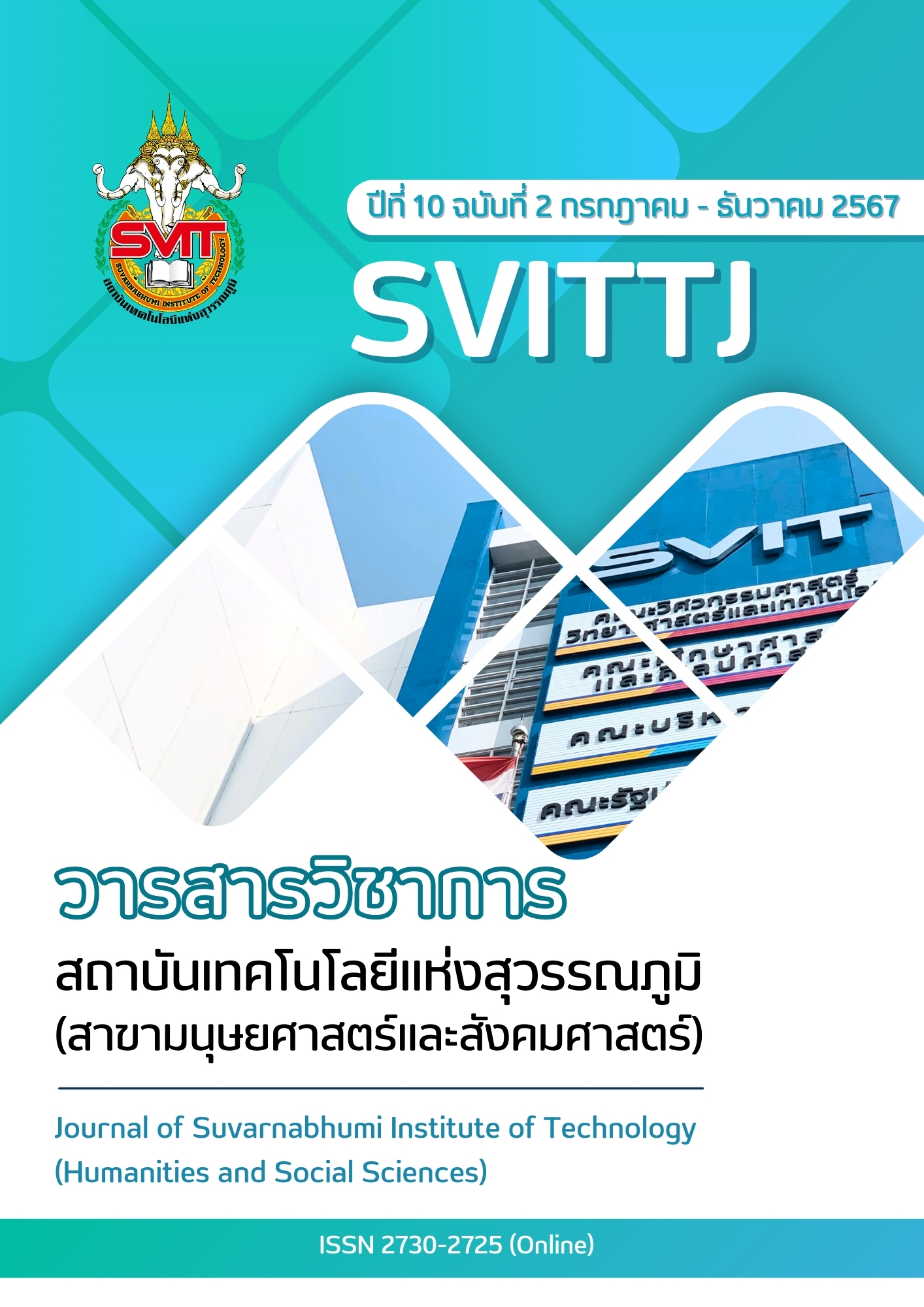FACTORS INFLUENCING THE SAFETY BEHAVIOR OF PRODUCTION WORKERS IN THE PLASTICS INDUSTRY: A CASE STUDY OF A FACTORY IN CHACHOENGSAO PROVINCE
Keywords:
Safety Behavior, Safety Knowledge, Safety Attitude, Plastics IndustryAbstract
This research aimed to study the safety behavior in the workplace of production employees and the factors influencing safety behavior among production employees at a plastics industry in Chachoengsao Province. The study adopted both document research and quantitative research methodologies to systematically examine occupational health, safety, and environmental conditions in the Thai manufacturing industry.
This study focused on all production employees of a specified company, totaling 30 individuals. A questionnaire, developed based on literature review and relevant research, was used as the research instrument. It was divided into four parts: general information, knowledge of workplace safety, attitude towards workplace safety, and workplace safety behavior. Data was collected through these questionnaires and analyzed using SPSS for both descriptive and inferential statistics.
Regression analysis revealed that safety knowledge significantly influences safety behavior, with a positive coefficient of 0.297. This indicates that higher safety knowledge correlates with better safety practices among employees. The relationship was statistically significant (p = 0.006), underscoring the importance of comprehensive safety training programs. The intercept value of 3.212 suggests a baseline level of safety behavior exists regardless of explicit safety knowledge, likely reflecting inherent safety practices, organizational culture, or regulatory standards. However, safety attitude did not significantly impact safety behavior, suggesting other factors might play a more crucial role.
In conclusion, this research highlights the critical role of safety knowledge in promoting safe behavior in the manufacturing sector. By prioritizing safety education and integrating it into comprehensive safety management systems, organizations can enhance workplace safety and reduce accidents. Future research should continue to explore the multifaceted nature of safety behavior to develop more effective safety interventions.
References
Antonsen, S. (2009). The relationship between culture and safety on offshore supply vessels. Safety science, 47(8), 1118-1128.
Antonsen, S. (2017). Safety culture: theory, method and improvement. CRC Press.
Cooper, M. D. (2000). Towards a model of safety culture. Safety science, 36(2), 111-136.
Geller, E. S. (2001). Keys to behavior-based safety. Government Institutes.
Geller, E. S. (2016). The psychology of safety handbook. CRC press.
Hale, A. R., & Hovden, J. (1998). Management and culture: the third age of safety. A review of approaches to organizational aspects of safety, health and environment. Occupational injury, 145-182.
Parker, D., Lawrie, M., & Hudson, P. (2006). A framework for understanding the development of organisational safety culture. Safety science, 44(6), 551-562.
Reason, J. (2016). Managing the risks of organizational accidents. Routledge.
Wannee Kamkhet. (2008). Research Methodology in Behavioral Sciences. Bangkok: Chulalongkorn University Press.
Weirich, H. & Koontz, H. (1993). Management: A global perspective. New York: McGraw-Hill.
Downloads
Published
Issue
Section
License
Copyright (c) 2024 Suvarnabhumi Institute of Technology

This work is licensed under a Creative Commons Attribution-NonCommercial-NoDerivatives 4.0 International License.
บทความที่ได้รับการตีพิมพ์เป็นลิขสิทธิ์ของวารสารวิชาการ สถาบันเทคโนโลยีแห่งสุวรรณภูมิ
ข้อความที่ปรากฏในบทความแต่ละเรื่องในวารสารวิชาการเล่มนี้เป็นความคิดเห็นส่วนตัวของผู้เขียนแต่ละท่านไม่เกี่ยวข้องกับสถาบันเทคโนโลยีแห่งสุวรรณภูมิ และคณาจารย์ท่านอื่นๆในสถาบันฯ แต่อย่างใด ความรับผิดชอบองค์ประกอบทั้งหมดของบทความแต่ละเรื่องเป็นของผู้เขียนแต่ละท่าน หากมีความผิดพลาดใดๆ ผู้เขียนแต่ละท่านจะรับผิดชอบบทความของตนเองแต่ผู้เดียว





